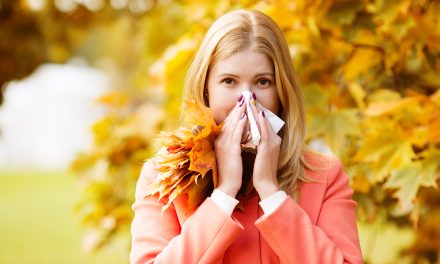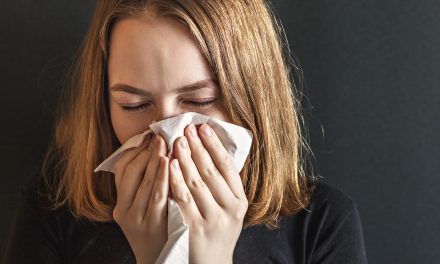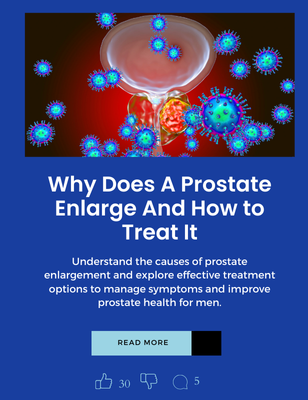Allergies are common conditions that arise when the immune system reacts to foreign substances known as allergens, which are typically harmless to most people. These allergens can range from foods and pollen to animal dander and medications. When someone with allergies encounters their specific allergen, the immune system perceives it as a threat, leading to various symptoms and reactions that can affect a person’s health and daily activities.

The body’s defense mechanism against these allergens involves the production of antibodies, particularly Immunoglobulin E (IgE). Once these antibodies are made, they can cause cells to release histamine and other chemicals, resulting in an allergic reaction. Symptoms of an allergic reaction can be mild, such as a runny nose or skin rash, or severe, like anaphylaxis, which is a life-threatening emergency requiring immediate treatment. Understanding how allergies impact the body is not only vital for those directly dealing with these issues but also for the broader health community to improve prevention and treatment strategies.
Key Takeaways
- Allergies trigger an immune response to typically harmless substances.
- Allergic reactions range from mild symptoms to severe, life-threatening conditions.
- Proper diagnosis and management of allergies are essential for maintaining health.
Understanding Allergies
Allergies occur when the body’s immune system reacts to a normally harmless substance known as an allergen. Understanding the types of allergens, how the immune system responds, and what triggers allergies is essential for managing these reactions.
Types of Allergens
Allergens can be categorized into several groups based on their nature and source. Common types of allergens include:
- Environmental: This group comprises air-borne particles like pollen from plants, dust mites, and mold spores.
- Foods: Certain foods may trigger allergic reactions, with some of the most frequent culprits being peanuts, shellfish, eggs, and milk.
- Contact: Skin contact with substances such as latex or pet dander can provoke allergies.
- Insect: Allergies may also be caused by insect stings or bites, including those from bees or wasps.
Immune Response to Allergens
When a person with allergies comes into contact with an allergen, their immune system mistakenly identifies it as a threat and mounts a defense. The immune response includes:
- IgE Production: The body produces Immunoglobulin E (IgE) antibodies specifically against the allergen.
- Histamine Release: Upon subsequent exposure to the allergen, these IgE antibodies trigger cells to release histamine, causing allergy symptoms.
Common Allergy Triggers
Allergy triggers are the specific conditions or environments that can lead to an allergic reaction. The body’s hypersensitivity to the following triggers often results in allergies:
- Seasonal: Varying pollen levels throughout the year can cause seasonal allergic reactions, commonly known as hay fever.
- Household: Dust and mold found in homes can trigger allergies, often exacerbated by humid or damp conditions.
- Dietary: Ingesting certain foods can elicit reactions ranging from mild to severe, sometimes leading to anaphylaxis in serious food allergies.
- Animals: Dander from cats, dogs, and other pets often contributes to allergic reactions.
Allergy Symptoms
Allergies manifest through various symptoms, which can affect different parts of the body. Recognizing these symptoms can be crucial for managing allergic reactions and seeking appropriate treatment.
Respiratory Symptoms
Respiratory symptoms caused by allergies are often a response to airborne allergens like pollen, dust, or pet dander. Common respiratory symptoms include:
- Runny nose: Clear nasal discharge is frequent in allergic reactions.
- Sneezing: Rapid, forceful ejection of air through the nose and mouth.
- Cough: A reflex to clear the airways, which may be persistent.
- Itchy eyes: An uncomfortable itching sensation that encourages rubbing.
- Watery eyes: Excessive tearing in response to an allergen.
Individuals with allergic asthma may also experience shortness of breath or a tight feeling in the chest during an allergic reaction.
Skin-Related Symptoms
Allergies can cause a variety of skin reactions, which may include:
- Hives: Red, itchy, raised welts on the skin’s surface, often caused by an allergic reaction as noted on Mayo Clinic.
- Eczema: A chronic condition characterized by itchy, inflamed, and sometimes blistering skin.
- Rash: Areas of irritated or swollen skin that can occur from an allergic response as detailed on Cleveland Clinic.
- Swelling: This can occur in tissues, often in the face, lips, or around the eyes, part of a condition called angioedema.
Anaphylaxis Signs
Anaphylaxis is a severe and potentially life-threatening allergic reaction. Signs of anaphylaxis include:
- Swelling of the throat: Can lead to difficulty breathing and is considered an emergency.
- Severe shortness of breath: May accompany a feeling of tightness in the chest.
- Rapid drop in blood pressure: Can cause dizziness, lightheadedness, or fainting.
Immediate medical attention is necessary when anaphylaxis signs appear. Information about anaphylaxis symptoms and treatment can be further explored on WebMD.
Mechanisms of Allergic Reactions
The human body reacts to allergens through a complex interplay involving the immune system, specialized cells, and chemical mediators. This process is not only intricate but also varies depending on the type of allergen and the individual’s sensitivity.
Role of Histamine
Histamine plays a pivotal role in allergic responses. It is a compound that is released by mast cells in the presence of an allergen. The purpose of histamine release is to prompt an immediate inflammatory reaction, which includes symptoms like swelling, redness, and itching. Histamine achieves its effects by expanding blood vessels and increasing their permeability, which allows other immune cells to access the site of allergen exposure more easily.
- Symptoms triggered by histamine release:
- Swelling (edema)
- Redness (erythema)
- Itching (pruritus)
- Nasal congestion
- Hives (urticaria)
Allergic Inflammation Process
Allergic inflammation is the immune system’s response designed to protect the body from perceived threats. When an allergen enters the body, it triggers a chain reaction that results in inflammation. This process involves a variety of immune cells, such as T cells, eosinophils, and basophils, which together produce a spectrum of symptoms and attempt to expel the allergen from the body.
Sequence of the Inflammation Process:
- Allergen exposure
- Activation of immune system
- Release of inflammatory mediators
- Recruitment of immune cells to the site of exposure
- Symptoms manifestation (e.g., runny nose, cough, wheezing)
Antibodies In Allergies
Antibodies, particularly Immunoglobulin E (IgE), are critical to the allergic response. When someone is exposed to an allergen for the first time, their body may produce IgE antibodies specific to that allergen. Upon subsequent exposure, these antibodies recognize the allergen and bind to it, triggering mast cells to release histamine and other substances that lead to an allergic reaction.
- Role of IgE in Allergic Reactions:
- First exposure: Production of allergen-specific IgE.
- Subsequent exposures: Binding of allergen to IgE, leading to activation of mast cells and the allergic response.
Understanding the mechanisms of allergic reactions enhances the ability to diagnose, treat, and manage allergic conditions effectively. The interplay between histamine, inflammation, and antibodies such as IgE is central to how allergies manifest in the body.
Diagnosis of Allergies
Accurate diagnosis of allergies is crucial for effective management and treatment. A comprehensive approach involves a thorough physical examination and various allergy testing methods, followed by a careful interpretation of the test results.
Physical Examination
When diagnosing allergies, a detailed medical history and physical examination are paramount. The allergist will look for physical signs such as skin rashes or nasal inflammation that indicate an allergic reaction. They may inquire about the patient’s symptoms, environmental factors, dietary habits, and family history of allergies.
Allergy Testing Methods
Several methods exist for allergy testing. The two most common are:
- Skin prick tests (SPT): Small amounts of potential allergens are applied to the skin, usually on the forearm, followed by a gentle prick or scratch. The development of a skin rash, itching, or raised welts within 15-20 minutes can suggest a specific allergy.
- Blood tests: Alternatively, blood tests, such as the ImmunoCAP specific IgE blood test, measure the level of IgE antibodies to specific allergens present in the blood. This test is helpful when skin tests are not advisable or in the case of skin conditions like eczema.
Interpreting Test Results
Interpretation of test results requires expertise to distinguish between true allergies and sensitivities that may not cause symptoms. A higher level of IgE antibodies in a blood test may indicate an allergy, but the allergist must correlate the test results with the patient’s clinical history. The presence of symptoms upon exposure to the allergen is also a key factor in confirming the diagnosis.
Allergy Treatments and Medications
Effective management of allergies involves a combination of treatments and medications to control symptoms and prevent reactions. These intervention strategies range from over-the-counter solutions for mild allergies to aggressive emergency treatments for severe reactions.
Over-the-Counter Solutions
Over-the-counter (OTC) medications are the first line of defense for people experiencing allergy symptoms. Antihistamines are widely used OTC options that help mitigate symptoms such as itchy eyes, sneezing, and a runny nose by blocking the action of histamine, which the body releases during an allergic reaction.
- Antihistamines: Include cetirizine, loratadine, and diphenhydramine.
- Decongestants: Often paired with antihistamines, they reduce nasal congestion.
- Nasal Steroids: Such as fluticasone, these sprays reduce inflammation in the nasal passages.
Prescription Medications
When OTC medications are insufficient, healthcare providers may recommend prescription medications. These include stronger antihistamines or corticosteroids that provide a more potent response in controlling allergic symptoms.
- Prescription-strength Antihistamines: Offer relief when OTC versions are inadequate.
- Corticosteroids: Oral or injectable forms are used for more severe allergic symptoms.
- Immunotherapy: Administered as allergy shots or sublingual tablets, it gradually reduces sensitivity to allergens.
Emergency Treatments
In cases of severe allergies, such as anaphylaxis, emergency treatments are critical. Epinephrine is the primary medication used in these situations, acting quickly to reverse the life-threatening symptoms of a severe allergic reaction.
- Epinephrine Auto-injectors: Devices like EpiPen® that deliver a precise dose of epinephrine.
- Emergency Medical Care: Immediate professional care is essential after administering epinephrine.
Immunotherapy may also be considered a long-term strategy to reduce severe allergic reactions. It involves exposing individuals to incremental amounts of the allergen, which can help to reduce the overall sensitivity and improve long-term outcomes.
Managing Food Allergies
Managing food allergies involves a proactive approach to identifying triggers and implementing strategies to prevent reactions while being prepared to address accidental exposures. It requires ongoing vigilance and a clear understanding of the potential risks associated with common allergens such as milk, eggs, peanuts, tree nuts, soy, wheat, fish, and shellfish.
Identifying Food Triggers
The first step in managing food allergies is to accurately identify the foods that cause reactions. This typically involves:
- Skin prick tests: to see reactions to common allergens.
- Blood tests: to measure the presence of specific allergy-causing antibodies to different foods.
- Elimination diets: where they remove suspect foods from their diet then reintroduce them to observe symptoms.
For some individuals, even trace amounts of an allergen can prompt symptoms ranging from mild digestive issues to severe anaphylaxis. Therefore, it’s crucial to determine which specific foods to avoid.
Prevention Strategies
Once triggers are identified, individuals with food allergies should employ the following prevention strategies:
- Reading labels: diligently checking for allergen warnings on food packages.
- Communicating with restaurants: clearly discussing allergies with staff to avoid cross-contamination.
- Creating a diet plan: ensuring it includes adequate nutrition while excluding allergens.
Implementing strict avoidance of identified allergens is key to preventing allergic reactions.
Dealing with Accidental Exposure
Despite preventative measures, accidental exposure to food allergens can occur. In such instances:
- Recognize early symptoms: such as hives or swelling, which can be indicative of an allergic reaction.
- Immediate use of epinephrine: if prescribed, for signs of a severe reaction, or anaphylaxis.
- Seek medical attention immediately: especially if symptoms of anaphylaxis are present, as prompt treatment is vital.
Having a clear action plan and ensuring that medications like antihistamines or epinephrine auto-injectors are readily accessible can save lives in the event of accidental exposure.
Seasonal Allergies
Seasonal allergies, often referred to as hay fever, significantly impact millions each year. Typically triggered by pollens from plants, these allergies are dependent on the seasons along with daily weather fluctuations.
Pollen-Driven Allergies
Pollen, a fine powder from flowering plants, trees, and grasses, serves as a potent allergen, triggering an immune response in susceptible individuals. The body’s defense mechanism erroneously identifies pollen as a hazard, releasing histamines to combat these harmless particles. This reaction results in common symptoms such as:
- Sneezing
- Runny or stuffy nose
- Itchy, watery eyes
- Itchy sinuses, throat, or ear canals
For accurate information on managing symptoms and treatment, consulting medical resources is advisable.
Weather’s Impact on Symptoms
The severity of allergy symptoms can be influenced by the weather. Windy conditions can escalate pollen spread, increasing allergen exposure and symptomatic reactions. Conversely, rain can temporarily clear airborne pollens, providing short-term relief. It’s essential to stay informed on local pollen counts, as different regions will experience varying levels of pollen-driven allergies depending on their specific flora and temperatures.
Allergies in Children
Allergies can profoundly impact children’s life, manifesting in various forms such as food allergies, eczema, and asthma. These conditions require vigilance and a tailored approach to management and treatment.
Recognizing Early Symptoms
Early detection of allergic reactions in children is crucial for effective management and treatment. Parents might notice symptoms like:
- Skin reactions: Red, itchy rashes, commonly seen in eczema.
- Respiratory issues: Wheezing or coughing which may signal asthma when triggered by allergens.
- Gastrointestinal symptoms: Nausea or vomiting after consuming specific foods.
- Anaphylaxis: A severe, potentially life-threatening reaction that can involve multiple body systems.
For food allergies, common triggers include nuts, milk, eggs, and shellfish. These allergies can cause mild symptoms like hives to severe reactions such as anaphylaxis.
Special Considerations in Treatment
Treating allergies in children often requires a multi-faceted approach, including:
- Avoidance: Keeping children away from known allergens is the first line of defense.
- Medication: Antihistamines, corticosteroids, or emergency medications like epinephrine auto-injectors may be prescribed.
- Immunotherapy: This treatment may be recommended for some children, especially those with severe allergies,Stanford Medicine Children’s Health.
- Management plans for school and other settings: Tailored action plans are essential to handle potential exposure and reactions outside the home.
It is imperative to work closely with healthcare professionals to identify and diagnose allergies accurately, including conducting skin tests, blood tests, or challenge tests to determine specific allergens.
Monitoring a child for signs of associated conditions like asthma or eczema which often accompany allergies, forms a significant part of the ongoing care.
Preventing Allergies
Prevention of allergies involves taking proactive steps to minimize the risk of allergic reactions. This can be achieved by controlling environmental exposure to allergens, making dietary adjustments, and working on building the body’s immunity.
Environmental Control
Proper environmental control can significantly reduce the number of allergens in living spaces. For individuals allergic to dust mites, it’s recommended to use allergen-proof bed covers, wash bedding in hot water, and maintain a low humidity environment. Regular vacuuming with HEPA filters can help control allergens from pets and cockroaches. Additionally, investing in high-quality air filters can reduce airborne allergens.
Dietary Adjustments
Making dietary adjustments could help in allergy prevention, particularly for food-related allergic responses. This includes the early introduction of potentially allergenic foods in infants, as recent studies suggest this may help in reducing the risk of developing food allergies. It’s vital that individuals with known food allergies strictly avoid those allergens in their diet.
Building Immunity
Building immunity against allergens can be a long-term solution for allergy prevention. Subcutaneous immunotherapy (SCIT), also known as allergy shots, and sublingual immunotherapy (SLIT) are methods that gradually expose the immune system to allergens. They aim to desensitize the body’s response to these substances, potentially reducing the severity of allergic reactions.
Psychological and Social Aspects of Allergies
Allergies can profoundly affect an individual’s mental well-being and social life. They often lead to increased stress levels and necessitate significant lifestyle adjustments, impacting the overall quality of life.
Stress and Allergies
Health is intricately linked with stress, and this connection is pronounced in individuals with allergies. The presence of allergy symptoms such as sneezing, itching, and watery eyes can induce stress, which, in turn, may exacerbate these symptoms. According to a Medical News Today article, the cycle of stress and allergic reactions can create a challenging situation for sufferers, impacting their mental health.
- Chronic Allergies: Prolonged battles with allergies can trigger chronic stress, leading to heightened anxiety and, in some cases, depression.
- Management Challenges: The ongoing requirement to manage allergy symptoms can be both physically exhausting and mentally taxing.
Social Impact and Lifestyle Changes
The social implications of allergies play a significant role in an individual’s quality of life. Engaging in routine social activities can become daunting due to the need to avoid triggers and manage unexpected allergy flare-ups. According to the American College of Allergy, Asthma & Immunology, allergies can lead to social impairment and emotional issues.
- Daily Interactions: Allergies can impact social interactions, as sufferers may feel anxious about exposure to allergens in social settings.
- Lifestyle Adjustments: From avoiding certain foods to limiting outdoor activities during high pollen seasons, allergies compel individuals to alter their lifestyles, sometimes leading to feelings of isolation or missing out on social experiences.
Frequently Asked Questions
This section addresses some of the most common inquiries regarding the impact of allergies on the body, with each question providing specific and factual responses.
What are the common symptoms of severe seasonal allergies?
Severe seasonal allergies can trigger a range of symptoms, from intense sneezing and runny nose to difficulty breathing and wheezing. Individuals may also experience swelling or bluish-colored skin under the eyes, known as “allergic shiners,” due to nasal congestion.
Can food allergies manifest with immediate and severe symptoms?
Yes, food allergies can lead to immediate and severe symptoms such as hives, swelling, and anaphylaxis, which is a rapid, life-threatening allergic response necessitating immediate medical attention.
How does an allergic reaction progress through its different stages?
An allergic reaction begins when the immune system mistakenly identifies a harmless substance as a threat, leading to the production of antibodies. Subsequent exposure to the allergen can cause symptoms ranging from mild, such as sneezing and itching, to severe, including shortness of breath and anaphylaxis.
What are the typical skin allergy symptoms and their underlying causes?
Skin allergy symptoms typically include redness, itching, and hives. These reactions are caused by the immune system’s response to a perceived threat, releasing histamines that lead to inflammation and the characteristic symptoms.
Can consistent exposure to allergens lead to prolonged allergy symptoms?
Prolonged exposure to allergens can result in chronic symptoms, such as persistent sneezing, coughing, congestion, or asthma, and may require long-term treatment strategies.
Is it true that increasing water intake can alleviate allergy symptoms?
Increasing water intake may aid in reducing allergy symptoms by thinning mucus, helping to alleviate congestion. However, it should be viewed as a supportive measure rather than a primary treatment.




















